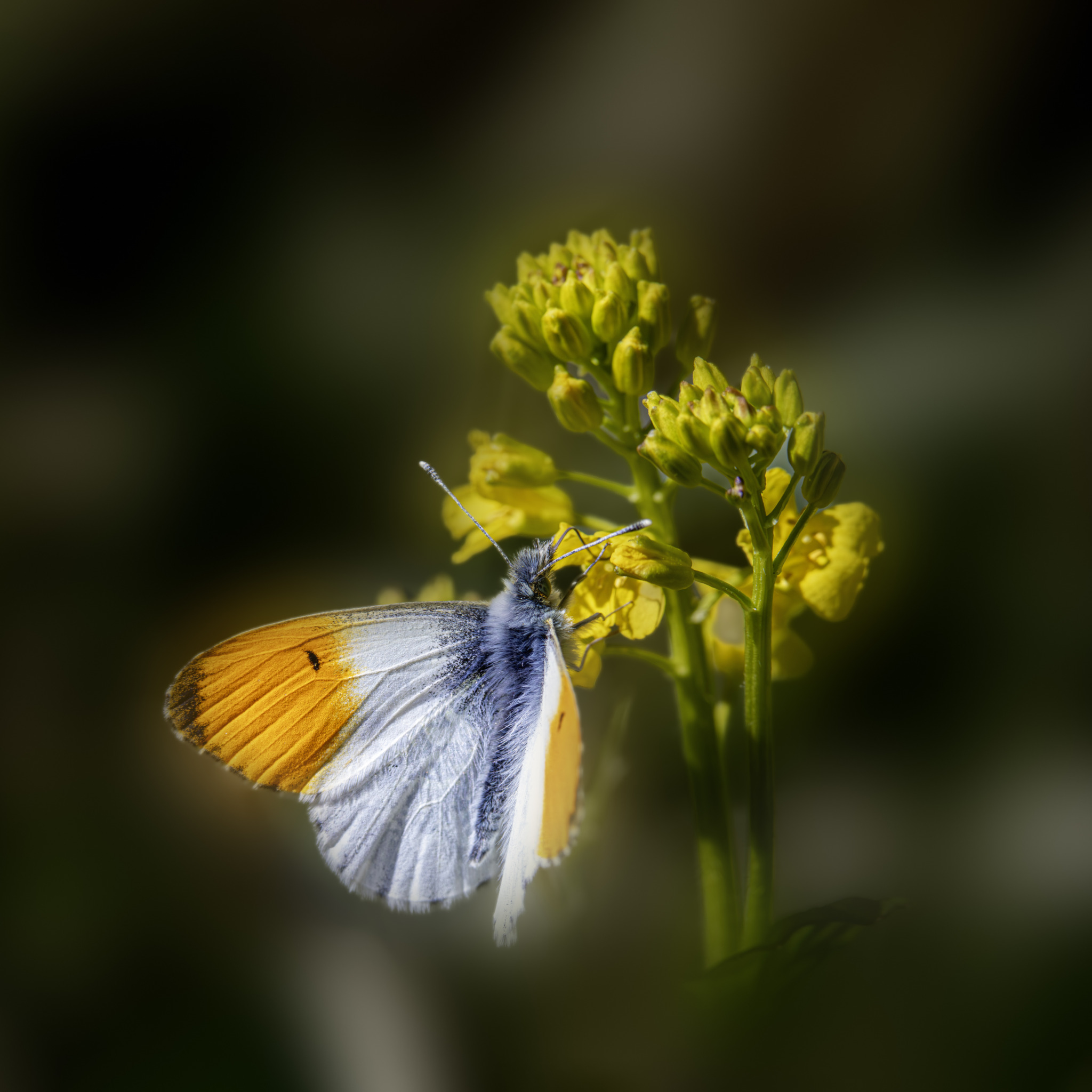Here’s a complete overview of the Orange Tip (Anthocharis cardamines), one of the most recognizable and charming spring butterflies of Europe, easily identified by the vivid orange wingtips of the males.
🦋 Orange Tip (Anthocharis cardamines)
Taxonomy
- Kingdom: Animalia
- Phylum: Arthropoda
- Class: Insecta
- Order: Lepidoptera
- Family: Pieridae (Whites and Sulphurs)
- Genus: Anthocharis
- Species: A. cardamines
General Description
The Orange Tip is a medium-sized butterfly that heralds the arrival of spring across Europe and Asia. Males are unmistakable with their bright orange forewing tips, while females are more subdued, resembling small whites but sharing the same green-marbled underwings.
- Wingspan: 40–50 mm
- Coloration:
- Male: White wings with vivid orange patches on the forewings; black wingtips and a small black spot near the center.
- Female: Lacks the orange coloration; white with grayish-black wingtips.
- Both sexes: Undersides of hindwings are beautifully mottled green and white, offering excellent camouflage when roosting.
Distribution
Anthocharis cardamines is widespread across:
- Europe: From the British Isles to the Balkans and Scandinavia.
- Asia: Through temperate Russia to northern China, Korea, and Japan.
- Absent from far northern Scandinavia and some Mediterranean islands.
It is a common spring species in many temperate regions.
Habitat
- Prefers meadows, hedgerows, woodland clearings, riverbanks, and roadside verges.
- Found wherever its host plants (wild crucifers) grow.
- Especially abundant in damp, flower-rich areas with abundant cuckooflower (Cardamine pratensis) and garlic mustard (Alliaria petiolata).
Behavior and Ecology
- Flight period: March–July (depending on latitude and altitude).
- Generations: Typically one generation per year (univoltine).
- Activity: Flies by day; males patrol hedgerows and meadows searching for females.
- Roosting: Rests on tall grasses or flower stems, wings closed and cryptically colored.
Diet and Feeding
- Adult diet: Nectar from wildflowers, especially cuckooflower, bluebell, dandelion, bugle, and garlic mustard.
- Larval diet: Caterpillars feed exclusively on flower buds and seed pods of crucifers (Brassicaceae).
Life Cycle
- Egg:
- Small, spindle-shaped, initially white, turning orange after a few days.
- Laid singly on the flower stalks of host plants.
- Caterpillar (larva):
- Green with a white stripe along the side.
- Cannibalistic — often eats rival eggs or larvae on the same plant.
- Pupa (chrysalis):
- Pale brown or green; attached vertically to a stem by a silk girdle.
- Overwinters in this stage.
- Adult:
- Emerges in spring, lives for about 2–3 weeks.
Conservation Status
- IUCN Red List: 🟢 Least Concern
- Population trend: Stable across Europe.
- Threats:
- Local declines due to loss of wildflower meadows and herbicide use.
- However, it adapts well to gardens and roadside habitats where host plants remain.
Ecological Role
- Important pollinator in spring ecosystems.
- Serves as a food source for birds, spiders, and predatory insects.
- Helps indicate healthy meadow and woodland-edge environments.
Identification Tips
- Male: White butterfly with bright orange forewing tips and a small black spot.
- Female: White with gray-black wingtips, lacking orange but with green-marbled underwings.
- Both: Rest with wings closed, showing mottled green camouflage beneath.
Interesting Facts
- The orange tips of the male are a warning signal to rivals and help females identify their mates.
- Their green mottling is actually a mix of yellow and black scales, not true green pigment.
- Often one of the earliest butterflies to appear in spring across northern Europe.
Visited 15 times, 1 visit(s) today
Views: 163
Subscribe to the newsletter:
